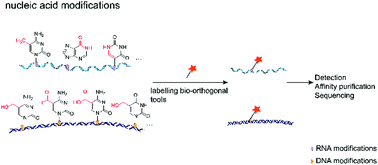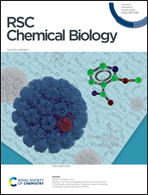Labeling and sequencing nucleic acid modifications using bio-orthogonal tools
Abstract
The bio-orthogonal reaction is a type of reaction that can occur within a cell without interfering with the active components of the cell. Bio-orthogonal reaction techniques have been used to label and track the synthesis, metabolism, and interactions of distinct biomacromolecules in cells. Thus, it is a handy tool for analyzing biological macromolecules within cells. Nucleic acid modifications are widely distributed in DNA and RNA in cells and play a critical role in regulating physiological and pathological cellular activities. Utilizing bio-orthogonal tools to study modified bases is a critical and worthwhile research direction. The development of bio-orthogonal reactions focusing on nucleic acid modifications has enabled the mapping of nucleic acid modifications in DNA and RNA. This review discusses the recent advances in bio-orthogonal labeling and sequencing nucleic acid modifications in DNA and RNA.

- This article is part of the themed collections: Development of bio-orthogonal tools and Bioorthogonal and click chemistry: Celebrating the 2022 Nobel Prize in Chemistry


 Please wait while we load your content...
Please wait while we load your content...